In the feudal time, seals were symbols of the absolute power. Therefore, they were not only made of the rarest materials, but also the crystallization of the talent and wisdom of the most talented craftsmen in the country.
All feudal dynasties in Vietnam from Dinh, Ly, Tran, Ho, Le to Nguyen, had seals, but only the Nguyen dynasty had a diverse system of seals. According to historical documents, the Nguyen Dynasty had more than 100 seals, which were cast in gold and silver, called ‘kim bao’, and made from precious gems, called ‘ngoc ty’. At present, 85 seals are preserved at the Vietnam History Museum and eight seals are displayed at the Hue Museum of Royal Antiquities.
These seals, which were used by the Emperor, the Empress Dowager, the Empress, the Crown Prince, are truly treasures of treasures.
Dr. Phan Thanh Hai, Director of the Department of Culture and Sports of Thua Thien-Hue province, former director of the Center for Conservation of Hue Monuments, said that “kim bao” (seals made of metals such as gold and silver) and “ngoc ty” (seals made of gems) have their own functions.
The seal named Dai Viet Quoc Nguyen Chua Vinh Tran Chi Bao is considered treasure of the Nguyen family. The two seals named “Phong Tang Chi Bao” and “Sac Mang Chi Bao” were used on “sac phong” (documents conferring a title on somebody).
In addition to the seals used in political affairs, some kinds of seals were used to honor titles (usually accompanied by gold books), and for worship (for the deceased emperor) ...
According to Hai, among the remaining “kim bao” of the Nguyen Dynasty, the one called “Hoang De Chi Bao” is the heaviest, which weighs nearly 10.5kg. Another special seal is the “Sac Menh Chi Bao”, which is smaller in weight, but its face is the largest (14cmx14cm). For “ngoc ty”, the largest seal face is no more than 10.5cmx10.5cm.
Hai, who has researched royal treasures of the Nguyen Dynasty for many years, said that in terms of structure and design, royal seals generally include the body and the handle.
In the early period, the body of royal seals are mainly square in shape, but from the time of Emperor Minh Mang onwards, circular seals appeared and seals in octagonal and elliptical shapes appeared from the time of Emperor Dong Khanh.
The handle of seals of the Nguyen lords were cast in the shape of unicorns and those of the Nguyen dynasty were mainly dragons and variations of dragons (for seals at lower levels). There are also seals with handles in the shape of unicorns (for the Crown Prince) or turtles (for the Empress Dowager) …
The inscriptions on the seal face are all embossed Chinese characters. There are several seals engraved with Chinese and French characters.
Some seals have the body or the back engraved with information about the time of casting, the material, the weight of the seal or sometimes the quality of the gold used to cast the seal.
“There are many legends around the royal seals of the Nguyen dynasty. The “Dai Viet Quoc Chua Vinh Tran Chi An” was lost many times but finally it has been returned to the real owner. The ‘Phong Cuong Van Co’ seal was found by people by chance and presented to Emperor Minh Mang…”, Hai said.
The most special is the “Hoang De Chi Bao” seal, which is no longer in Vietnam.
In 1945, the last king of Vietnam - Bao Dai - agreed to hand over to the Provisional Revolutionary Government most of the Nguyen dynasty's treasures. Most of them are symbolic artifacts for the dynasty, royal utensils, etc. totaling more than 2,500 items. These items were transported to Hanoi and handed over to the State Bank for preservation.
In late 1946, the revolutionary government was forced to withdraw to the Viet Bac war zone. During the most difficult time, the economic potential was almost exhausted, so some members of the Government suggested selling the treasures of the Nguyen Dynasty to buy weapons and food... However, President Ho Chi Minh disagreed. Thanks to President Ho's determination, these treasures have been preserved until today, Hai said.
In 2010, a special collection of treasures of the Nguyen Dynasty was introduced to the public for the first time.
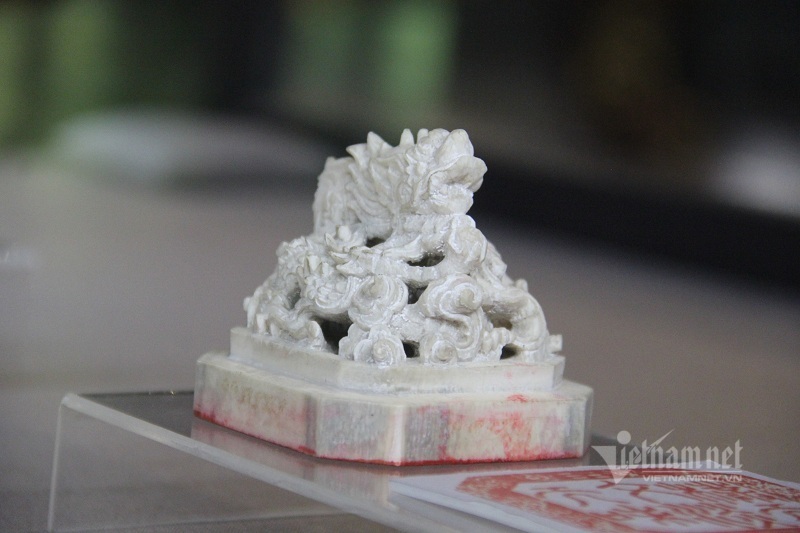 |
|
An ivory seal of the reign of Emperor Tu Duc. |
 |
|
The gold seal of Emperor Tu Duc (left) and the gold seal (right) of Emperor Minh Mang.
|
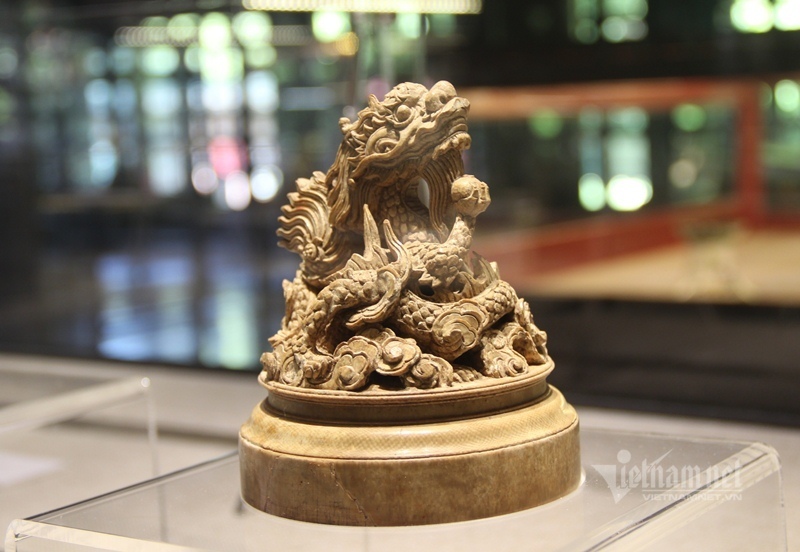 |
|
Emperor Thieu Tri's seal was made in 1846-1847. |
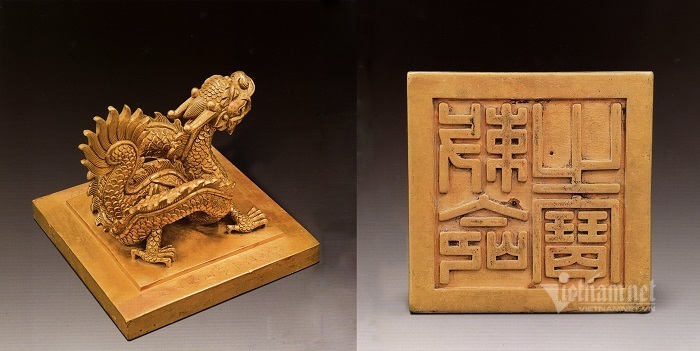 |
|
The seal “Sac menh chi bao” of Emperor Minh Mang. |
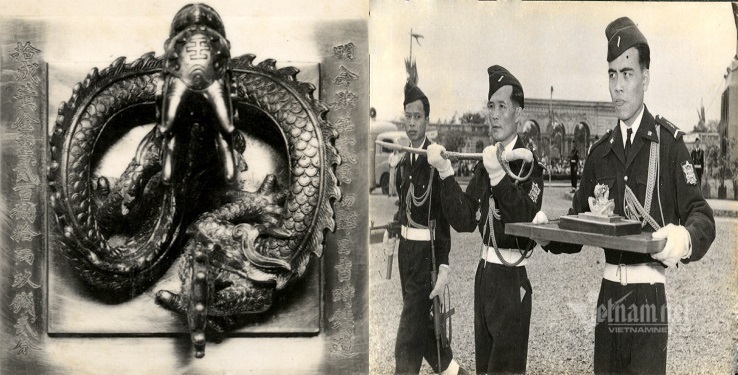 |
|
The seal and sword of King Bao Dai are now in France.
|
Quang Thanh - Thanh Hai
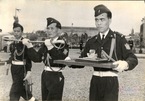
The precious sword and seal of the Nguyen Dynasty
After abdicating, Emperor Bao Dai handed over his sword and seal, which symbolize the power of the dynasty, to the revolutionary government.
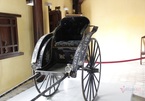
Nguyen Dynasty’s treasured rickshaw returned to VN after competitive auction
The rickshaw that Emperor Thanh Thai gave his mother was transported to Vietnam by air in 2015 after more than 100 years staying in France.
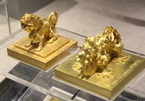
Nguyen Dynasty treasures take long road back home
Hundreds of antiques and treasures of the last feudal dynasty in Vietnam - Nguyen Dynasty – have drifted everywhere. Through decades of wandering, many antiques have been repatriated.